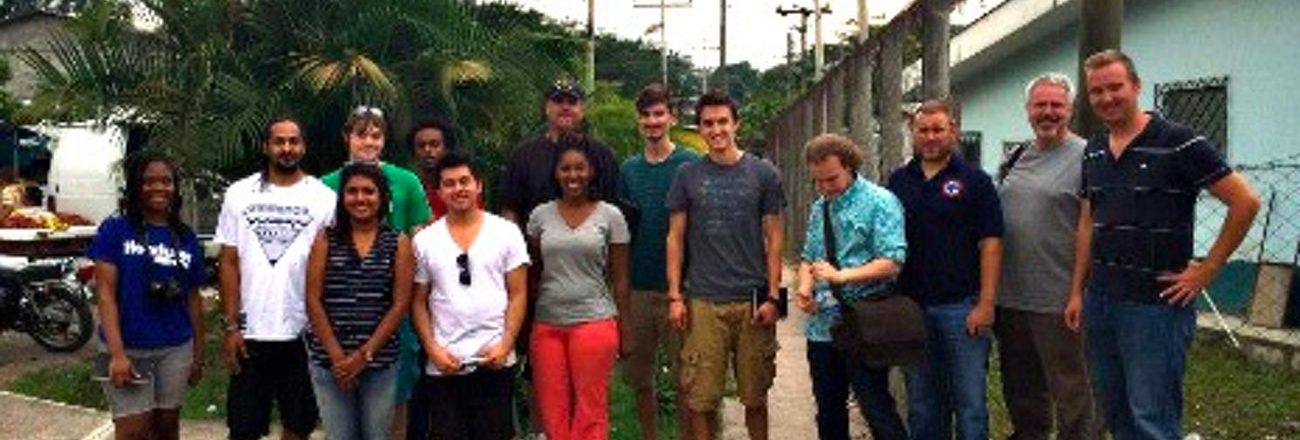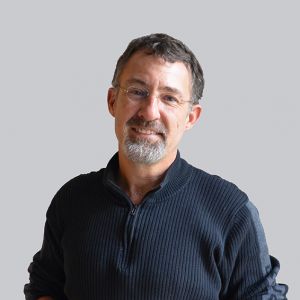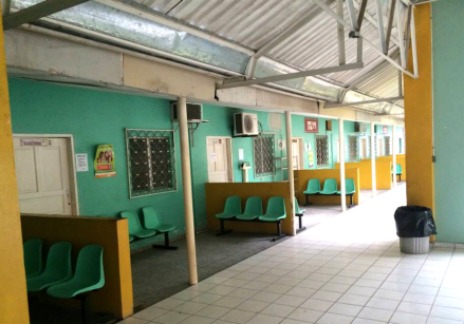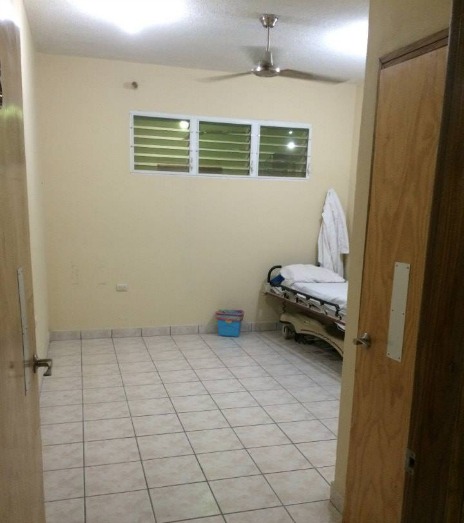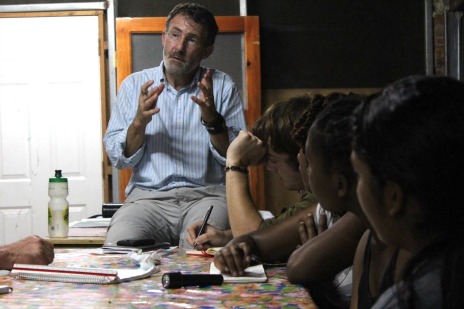
Andrews University Masters of Architecture class in Honduras.
I spent three days last week working with the Andrews University School of Architecture Master’s degree students and professors on a feasibility study for a new hospital in Pena Blanca, Honduras. This was a follow up to a presentation I gave to them earlier in the year on “Reverse Innovation”. (To discover more about “Reverse Innovation: Design Lessons from the Global South”, email us here.)
Pan American Health Services – Background
Our client is Pan American Health Services (PAHS). This small non-profit was formed in 1960 by a determined doctor and his family, the Youngbergs, who literally carved a clearing out of the jungles of Honduras. With incredible courage and persistence, the members of this family have taken care of the desperately poor and malnourished people of these remote mountains. (This is somewhat similar to what the well-known Paul Farmer did later, in Haiti. Honduras is second only to Haiti in terms of poverty in this hemisphere.) The Youngbergs were certainly ahead of their time but had minimal advertising and promotion of their work.
Year in and year out, the Youngbergs have provided whatever medical services they could. Over the years, these services have included emergency care, maternity care, primary care, and most especially, nutrition services. They regularly host volunteer medical teams who come to the clinic to provide services there and to the surrounding villages.
Through the years, this small country (about the size of Virginia) has faced many changes with great impact on its people and PAHS. Aileen Youngberg, daughter of Dr. Youngberg,
“I remember bathing in the pristine jungle springs. They have now been claimed and concreted into a commercial bathing establishment.”
The town of Pena Blanca has sprung up near the PAHS compound, and new kinds of problems have emerged. And, as conditions around them have evolved, so has the focus of their mission.
PAHS still takes the badly malnourished referred to them from the health system. They’ve even developed a type of shelter for abused and otherwise abandoned women and their children. It is not uncommon in that area for a husband to abandon his wife and kids, leaving them with no ability to support themselves. The Youngbergs shared story after story with me:
—A child’s father was riding his bike home and was killed by a passing truck. Her mom brought her to live at PAHS.
—An abusive father who killed three of his children, believed a fourth was not his and so, locked him in a shed, until the mother was able to escape with the kids to PAHS.
And, through it all, the Youngbergs take them in. Whether or not they have the resources, they take care of them until they are rehabilitated enough to build their own lives again on their own.
New challenges. Evolved mission.
And so, the mission has evolved beyond healthcare, encompassing education and development. USAID chose the Youngbergs to operate a Technical School in the town, teaching the kids skills that will allow them to earn a living and lift themselves from poverty. They train the kids who stay with them, and they are proud of the ones who have gone to college and are now returning to help them tend to the people of the area.
But they face many challenges. The Youngbergs have a steady set of supporters of all faiths and of no faith, from the US. But, many of these relationships were based on the work of Dr. Youngberg, who died a number of years ago. The supporters are growing older and the donations are falling off.
And, the town of Pena Blanca is starting to encroach onto the land of the Youngbergs. Interestingly, Dr. Youngberg was also an early environmentalist. He was able to purchase several large plots of land in the area which he intended to set aside for the protection of the local flora and fauna – something extremely important in this area, where a growing population is sometimes bent on slash and burn-farming. He has protected a number of important areas for the local birds and butterflies.
So, the Youngbergs asked the School of Architecture at Andrews University to help them develop a plan to work with the Town of Pena Blanca, and to develop parts of their property in ways that will help lift the town and its people economically, and help advance the mission of PAHS. As part of that, they want to create a new hospital that will help them serve the poorest of the poor.
Types of Medical Centers.
(Through my travels, I have found this model to be the case in many countries.)
- Public hospitals that are usually desperately overcrowded, underfunded, and with crumbling buildings, but that try to take everyone.
- Private hospitals, usually catering to the higher paying clients (the insurance system in the country is very new, and most people are forced to pay out of pocket for any medical costs). This part of the market is usually in the form of an enterprising doctor who decides to build his own hospital and who, more or less, does it the way he or she wants it. We visited one such clinic – the Korean ophthalmologist was almost complete with his new hospital, but he had left the two ORs shelled, waiting for the American surgeons who travel down to operate there to tell him how to finish them.
- In-between #1 & #2 is generally supported by some religious order or other charitable organization. These tend to serve a wider range of people, some with insurance, and some without. There are no large hospital chains like those in the states.
Moving forward.
I spent a lot of time touring different kinds of Honduran hospitals, learning about how they were designed and operated. More important, I spent a lot of time with the Youngbergs, trying to help them figure out how to develop a hospital that would have an economic model that could work. In general, they have envisioned the creation of a “tourist hospital” that will generate sufficient revenue to allow them to also provide services for the people they feel called to serve – the people who have no resources. The creation of a hospital that will cater to the needs of rich Americans wanting a medical holiday and the illiterate mountain people of Honduras who don’t know what a toilet is – clearly presents interesting programming challenges.
And, so, over the course of those three days, we created some initial concepts and ideas, and the students at Andrews will work to refine these over the course of this school year. I will continue to stay connected to this initial work, providing assistance where possible—connecting them with resources that will help propel the mission forward, supporting the work of PAHS, working to make this environment better.
Interested in what you see? Subscribe to receive monthly news and information
more tailored to what you need.
